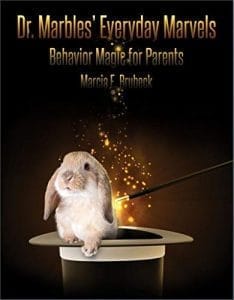
Behave Yourself Naturally
Did you know that exposure to the natural world is good for you? I bet you did even if you never thought about it until now.
You don’t need a classroom to teach you this. As you move through each day, try asking yourself this question: how does nature inform your world?
Craig Chalquist (http://www.chalquist.com) identifies eight things we learn from our gardens and more generally from nature.
Lesson 1. Abandon perfectionism. Gardens are messy. Cultivation is a contest between the gardener and the weeds, insects, and other wildlife. Driving along residential streets, you can watch as people try to tame nature with grass and asphalt. Did you ever notice how little time it takes for chaos to return?
The asphalt crumbles. Clover, moss, smartweed, wild chrysanthemums, and gill-over-the-ground invade the grass. Given enough time, houses totter and fall. When roofs cave in, trees insert themselves in basement cracks. Without constant vigilance, the green world takes over. We have little or no control.
Anyway, perfection is dull, boring, mechanical. The tension between order and chaos keeps things interesting.
Lesson 2. Things take time to grow. It’s all about the process, as we therapists are fond of saying. Plant the seeds. Watch as they sprout, tendrils rising from the soil like small soldiers ready to battle with the elements and each other.
In spring, bloodroot blooms and fades, giving way to anemones, coltsfoot, trout lilies, and trillium. We can admire these old friends on their brief visit and watch them tranquilly as they leave, knowing they’ll be back.
Come summer we can harvest lamb’s quarters, sorrel, and purslane, wild plants that are richer in vitamins than their cultivated cousins because their growing season is longer.
Lesson 3. Detach from outcomes. I remember the monarch butterfly chrysalis, pale green with gold studs, that I collected from milkweed and placed in a bell jar for hatching. Through the transparent membrane I watched the orange deepen as the larva grew.
What came out in the end, though, was not the winged insect but a worm, embedded by its parent in a living but dormant food source. Death nurtures life, each correcting the other in endless succession.
Lesson 4. Everything contributes. I am glad to find honey bees on my St. John’s Wort, a first sighting in several years. I know that the fruit trees and flowers need them. The old maple that housed a hive when I first moved in has long since been cut up and hauled away. A tiny bat flutters through my house one night, and I am happy to guide it to an open window so that it can keep helping me with mosquitoes. On the far side of the garage I have hung a bat house.
Lesson 5. Everything self-organizes. Foolish me, I thought I could drain the backyard and grow bushes. The oak trees whose canopies soar far above my head could well have been laughing as I tried. Each fall hundreds of small acorns rain down. If I stopped mowing and mulching, I would soon find myself in an oak forest, with the occasional maple tree and catalpa courtesy of rooted residents down the street.
Lesson 6. Things decay and die. As summer fades into fall, striped spiders emerge. The praying mantis basks on the azalea. The leaves compost. Mushrooms in the grass trace the decaying roots of trees long gone. Spiders tuck egg sacs into crevices before crawling off to die in the wilting grasses. The praying mantis wraps its porous nest around a weigela branch before vanishing. Rain and snow meld the remnants of the past year’s growth with the soil, enriching it for the year ahead.
Lesson 7. Trust the senses. The bitter scent of marigolds, the sticky blooms of petunias, the sweet roses, the soft-petaled daisies and black-eyed susans, stand as summer’s hallmarks. Succulent local peaches, blueberries, and heirloom tomatoes grace the tongue.
As fall deepens I catch a whiff of burning leaves, a rare smell now though not in my childhood, when raking and burning were annual rituals. The morning glories fling blue cupfuls of sunlight over the fence, a last hurrah before the first frost. At sundown, the trunks of the oaks, black sentinels, guard a coral sky.
Lesson 8. Nature bats first and last. I am sixty-six now but not for long. Most of what I see I began noticing in childhood. Most of it will continue long after I have gone. I take my place in the eternal parade at birth, as I age, and when I die. I find comfort in being part of the cosmic cycle, unending, overarching. Here is ever-present evidence that all of our experience, the bad and the good, is simply part of what it means to be human and alive.
Now, as the harvest season points us toward the holidays and the sharp winter of the American Northeast, it can’t hurt to thank the universe for the natural blessings that make us glad we have eyes, ears, noses, tongues, and skin.





